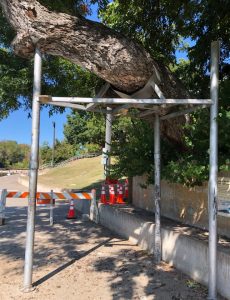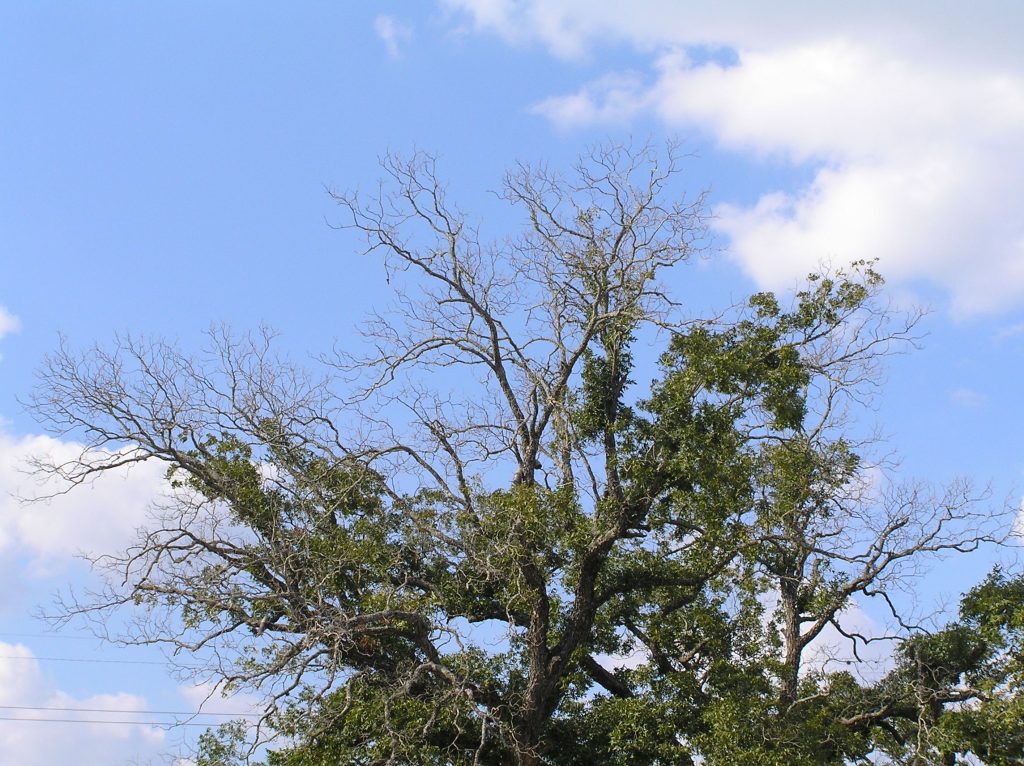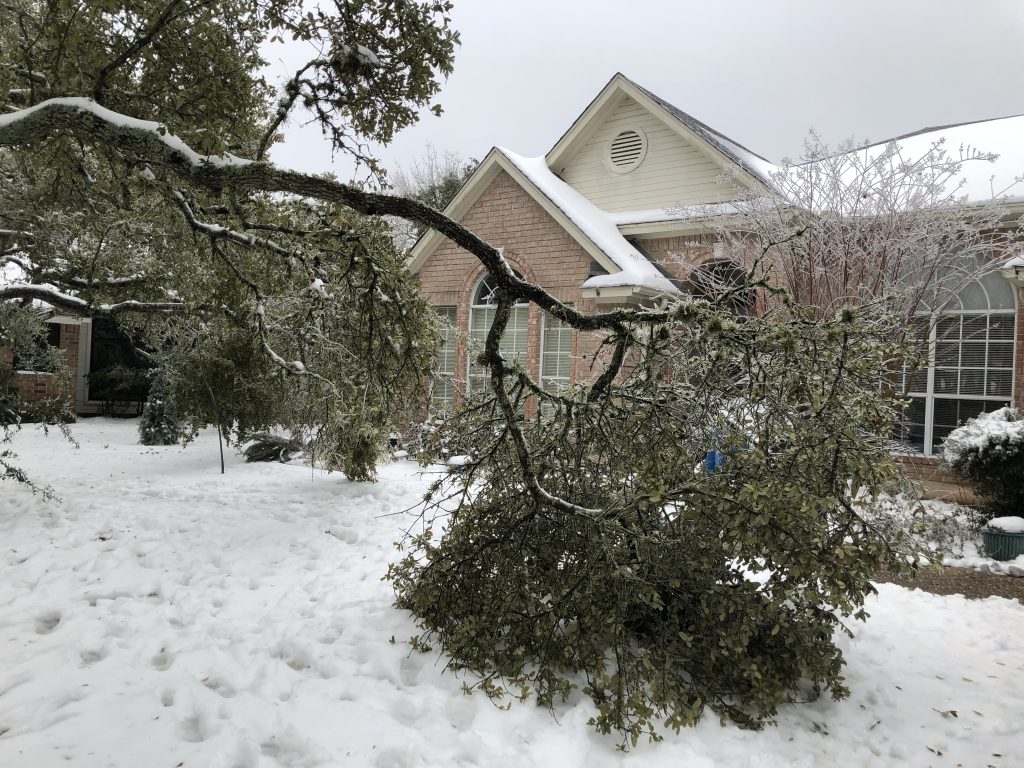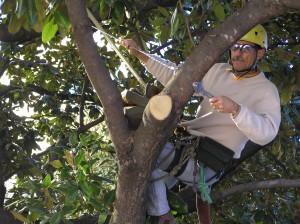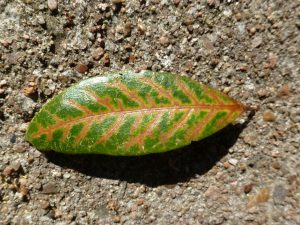I’m definitely seeing an abnormal amount of live oaks declining or outright dying this fall. More so than even last year, when we were much drier. So what’s the cause? Many homeowners are contacting me wondering if they have oak wilt. This is the usual concern whenever a homeowner sees an oak on their property that does not look normal. The good news for these folks is that so far none of the ones I seen this fall that look like this have oak wilt. Here are some pictures of the primary way I am seeing these trees present:
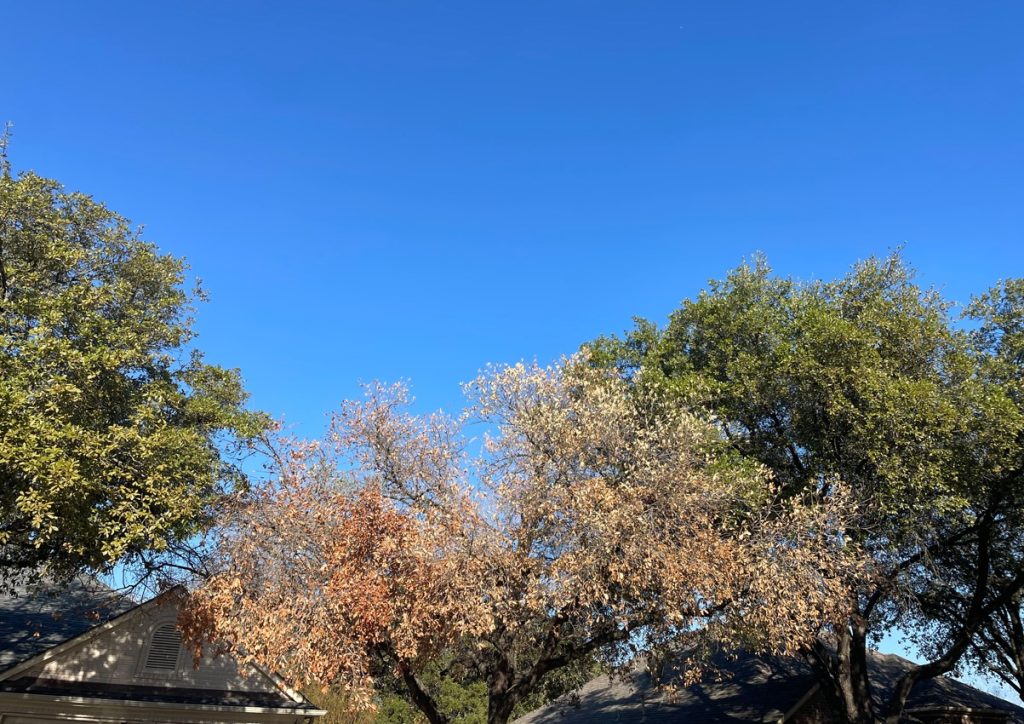
Dying Live Oak – Photo A
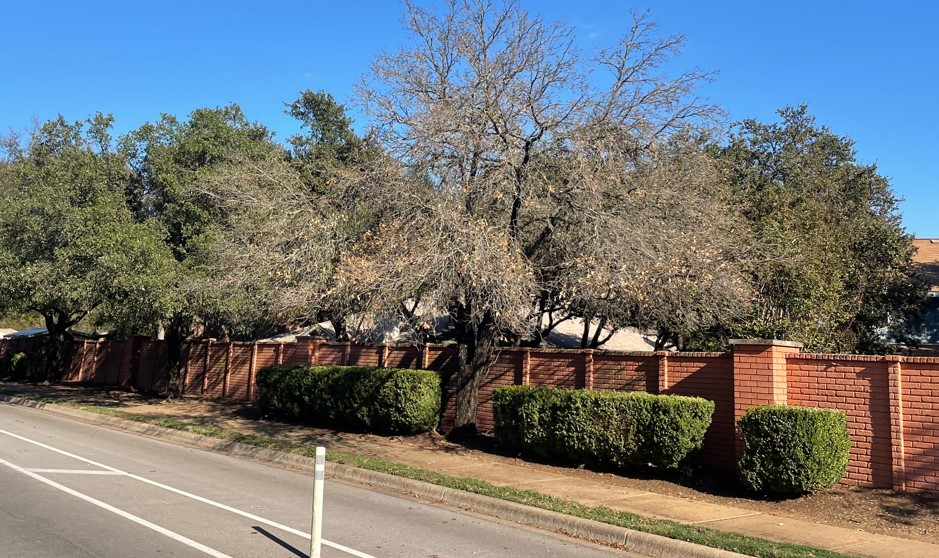
Dying Live Oak – Photo B
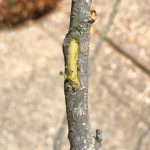
Healthy Cambium – Photo C
Notice that in both photos, all of the remaining leaves are brown. I expect most trees in this condition to die, if they’re not already dead. A good way to test is to scrape the bark on some of the smaller branches where the bark is thin. If the tissue immediately under the outer bark (the cambium area) is a bright greenish color (Photo C) that part of the tree is alive and healthy. This does not mean the entire branch is healthy, just the branch up to the point where you test the tissue. It could be dead beyond that (towards the tips), or other branches in the canopy could be dead. So testing in several spots is necessary for a fuller assessment. If the cambium tissue is brown, that part of the tree is dead. If it is a pale yellow, then it’s alive but doing poorly, and most likely will die. Be aware that these inner bark colors are those you’d find on small live oak branches. A greenish cambium region is common on many other species but not all. And on larger live oak branches, a healthy inner bark will be a rusty reddish color.
There are actually still some green leaves on the tree in Photo B, but they are on the back side, low on the canopy, and not visible in the photo. This is another common way in which stressed trees are presenting this fall; some sections of the canopy are completely brown, and others are full of healthy leaves. Continue reading

